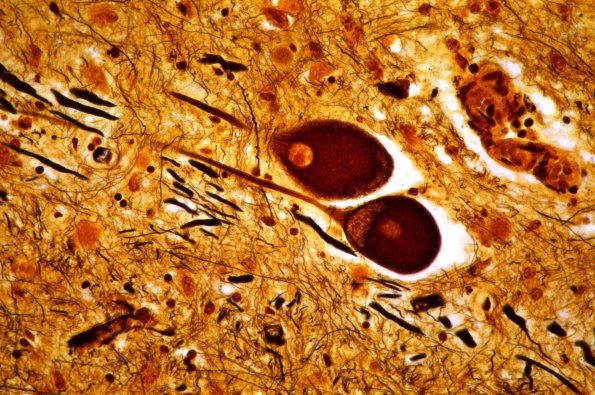Table of Contents
Washington University Experience | NEURODEGENERATION | Progressive Supranuclear Palsy (PSP) | 15C5 PSP (Case 15) V nerve Biels
The neurons of the 5th nerve nucleus participate in the formation of tangles. (Bielschowsky) ---- Not shown: Sections from the basal ganglia and most notably the globus pallidus show marked neuron loss and reactive gliosis in contrast to the generally nonreactive, intact appearing adjacent putamen and caudate nuclei. Bielschowsky silver stains showed scattered globoid silver positive tangles, particularly within the medial segment of the globus pallidus. Rare globoid tangles are noted in the putamen. The sections of basal ganglia also include the nucleus basalis of Meynert which contains many characteristic magnocellular neurons that contain occasional globoid tangles. ---- Final Neuropathologic Diagnoses: Progressive supranuclear palsy. ---- Comment: The neuropathological evaluation of this brain shows changes diagnostic of progressive supranuclear palsy (PSP). There is no evidence of neurofibrillary tangle or senile plaque formation in the telencephalon. By contrast, many characteristic subcortical structures contain globoid silver positive tangles, show neuron loss, and in some locations (e.g: medial section of globus pallidus and subthalamic nucleus), marked reactive gliosis. The anatomical distribution of these globoid tangles, including globus pallidus, subthalamic nucleus, periaqueductal grey, red nucleus and substantia nigra are consistent with that described in PSP. Taken together with the protracted history of appropriate stigmata for PSP, a lack of neurofibrillary tangle or senile plaque formation in the telencephalon, and globoid tangles in appropriate subcortical structures, the diagnosis of progressive supranuclear palsy is neuropathologically confirmed.

